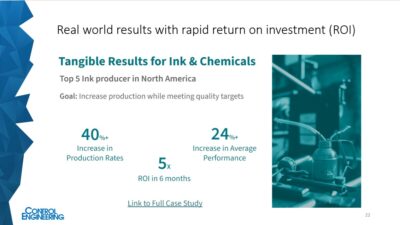Back when industrial automation was still just an offshoot of the electrical equipment industry, automation vendors viewed product sales as the only path to profits. They often had to give away technical services to close those sales. Their products were all proprietary and only their own engineers knew how to work with them.
Back when industrial automation was still just an offshoot of the electrical equipment industry, automation vendors viewed product sales as the only path to profits. They often had to give away technical services to close those sales. Their products were all proprietary and only their own engineers knew how to work with them.
That scenario has changed. Thanks to open systems technology and dramatic price reductions, many automation products have become commodities. Only a handful of product vendors continue to offer design, installation, and start-up services.
Many more vendors are turning to third-party engineering firms, such as system integrators, to provide the technical services required by prospective product buyers (See ‘Integrator Partnership Programs Offer Pros and Cons,’ CE 2000 Automation Integrator Guide , mid-Dec., ’99, p. 6). Software vendors in particular have become dependent on system integrators as a sales channel-some for as much as 50% of total revenues.
A majority of system integrators
listed in Control Engineering’s
Automation Integrator Guide
have earned less than $10
million annually over the last
three years, but an increasing
percentage are earning more
than $10 million.
Show me the money
So, is money being made in the service sector of industrial automation? Contract engineering firms listed in Control Engineering’s Automation Integrator Guide- at www.controleng.com/integrators -report generally steady growth in annual revenues in recent years. A growing percentage of integrators are earning more than $10 million annually.
Independent system integrators that are members of the Control System Integrator Association (CSIA, Exton, Pa.; www.controlsys.org ) estimate their U.S. market at $1.3-$1.6 billion per year. A recent survey of CSIA members revealed that larger integrators have been especially successful over the past three years. CSIA adds the driving forces behind this growth include continued downsizing of; rapidly changing and increasingly sophisticated technology; and users desiring independent expertise and turnkey responsibility.
Knowledge is profit
An independent survey by Bull’s Eye Marketing (Fond du Lac, Wis.) reveals functions that system integrators find most profitable. Not surprisingly, the list is topped by activities that require the most experience and technical skill, such as custom programming, networking/communications, and system design. Moderately profitable activities include system installation, CNC applications, and maintenance. Documentation and panel assembly were ranked as the least profitable activities.
The study, ‘Industrial Automation and Control System Integrators,’ adds the respondents’ anticipate demand for a wide range of automation products from sensors and actuators to controllers and HMI software. Over the next five years, integrators expect to increase their product purchases by an average of 149% across all product categories. No wonder automation integrators seem optimistic about future business prospects.
Although they pay comparable salaries, larger system integrators have consistently generated more sales per employee than smaller ones.
For more information about the Automation Integrator Guide contact Vance VanDoren, consulting editor, at [email protected] . Contact the CSIA at [email protected] and Bull’s Eye Marketing at [email protected]



